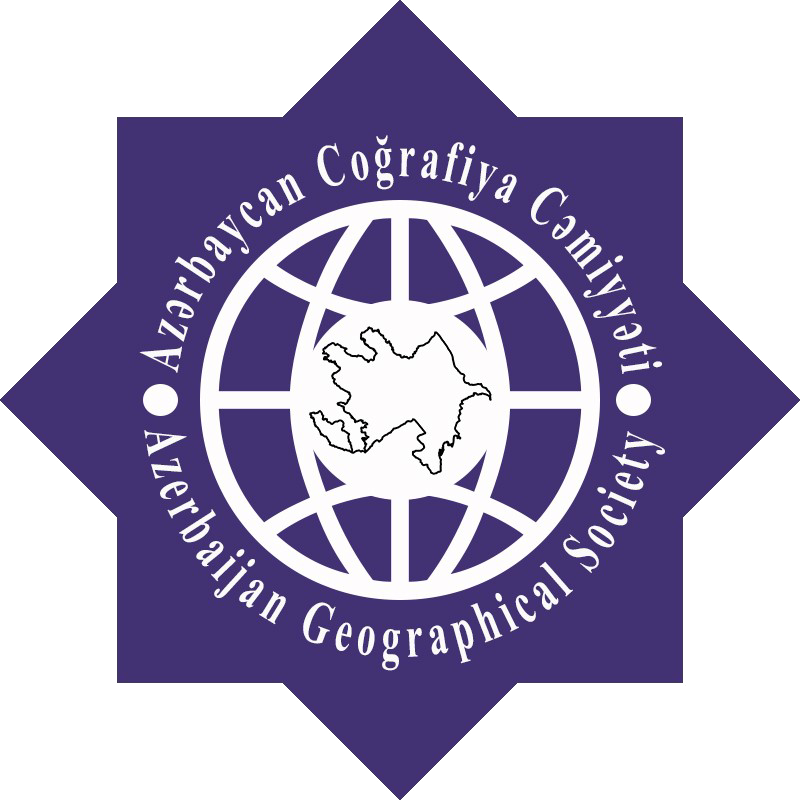ESTİMATION OF WATER RESOURCES OF EASTERN ZANGAZUR ECONOMIC REGION
Z.N.Eminov, M.A.Teymurov
Abstract. The article is devoted to the study of water resources of the newly established East Zangezur economic region. Water resources were estimated using an innovative Complex Water Balance Method (CWBM) prepared based on the synthesis and modification of leading hydrological models. The whole research process is carried out only by remote sensing of multispectral satellite images of the territory. The advantages of the new method are its independence from observational data and spatio-temporal changes, as well as from the results obtained using computational, comparative, and probabilistic ArcGIS Pro software. The new methodologies take into account most of flow-forming factors affecting the volume of water resources. First, the runoff coefficients are determined, corresponding to various scenarios of complex morphometric, landscape, climatic, and other main factors, and then water resources are estimated in accordance with their distribution in the territory. As a result of the investigations, the water resources of the East Zangezur economic region were estimated at 1446,7 million m3. In the water balance of the region, 16,4% of atmospheric precipitations are spent on surface runoff, 15,8% — on underground feeding of rivers, and 67,8% — on evaporation from the catchment.
Keywords: water resources, water balance methods, hydrological soil groups, multispectral satellite images, LULC, normalized difference index
REFERENCES
- Abera Shigute Nannawo, et.al. Exemplifying the effects using wetspass model depicting the landscape modifications on long-term surface and subsurface hydrological water balance in Bilate Basin, Ethiopia. 2021. Advances in Civil Engineering Journal.
- Ampofo S., et.al. Modelling soil water balance of an agricultural watershed in the Guinea Savannah Agro-ecological Zone; a case of the Tono irrigation dam watershed. Ghana., 7 (1). 2020, pp. 69–81.
- Biswajeet Pradhan., et.al. Prediction of spatial soil loss impacted by long-term land-use/land-cover change in a tropical watershed. Sydney. University of Technology. 2017. Geoscience Frontiers 10 (2).
- Camille Thomason, P.E. Hydraulic Design Manual. 2019. Runoff Coefficients. Tables Runoff Coefficients for Urban & Runoff Rural Watersheds.
- Junfang Liu., et.al. Water balance changes in response to climate change in the upper Hailar River Basin, China. Hydrology Research. 2020. 51 (5): 1023–1035.
- Mammadov R.M., Teymurov M.A. Assessment of water resources and risk of water losses due to climate changes and human activities. The Scientific Heritage Journal. Budapest, Hungary. 2019. No 34. pp. 3–12.
- National Land Cover Database-NLCD. Multi-Resolution Land Characteristics Consortium. 2019.
- New Jersey Stormwater Best Management Practices Manual. Computing Stormwater Runoff Rates and Volumes.
- Ponce V.M. & Shetty A.V. A conceptual model of catchment water balance. Formulation and calibration. Hydrology, pp. 27–40. Online version 2016.
- Raymond A. Kasei., et.al. Application of SWAT hydrological model for assessing water availability at the Sherigu catchment of Ghana and Southern Burkina Faso. HydroResearch Journal. Volume 3. 2020, pp.124–133.
- Renato Sılva Junıor., et.al. Response of water balance components to changes in soil use and vegetation cover over three decades in the Eastern Amazon. Water and Resources Management. 2021.
- Sharma J., Prasad R., et.al. Land use and land cover classıfıcatıon of multyspectral Landsat-8 satellıte ımagery usıng dıscrete wavelet transform. Remote Sensing and Spatial Information Sciences, volume XLII–5, 2018.
- Shima Nasiri, Hossein Ansari & Ali Naghi Ziaei. Simulation of water balance equation components using SWAT model in Samalqan Watershed, İran. Arabian Journal of Geosciences. 2020, volume 13.
- Teymurov M.A. Importance of studying of inland water resources in sustainable development of the country and protection of ecosystems. International Conference: Understanding the problems of inland waters: case study for the Caspian basin (UPCB), Baku. 2018, pp. 326–332.
- Teymurov M.Ə. Ərazinin su balansı və rütubətlənmə şəraitinin yeni metodlarla qiymətləndirilməsi. Monoqrafiya. Bakı: “Elm və Bilik” nəşriyyatı, 2019, 202 səh.
- Teymurov M.Ə. Kiçik Qafqaz çaylarının su ehtiyatlarının hesablanma metodikası və onların qiymətləndirilməsi. Coğrafiya üzrə fəlsəfə doktoru elmi dərəcəsinin iddiası üçün dissertasiya. 1999, 153 s.
- Teymurov M.Ə., Abduyev M.A. Hidroloji torpaq qrupunun ərazinin torpaq istifadəçiliyi və su ehtiyatlarinin qiymətləndirilməsində rolu. AMEA Torpaqşünaslıq və Aqrokimya İnstitutu, akademik Həsən Əliyevin 110 illik yubileyinə həsr edilmiş Respublika Elmi Konfransı, Bakı, 2018, səh. 464–469.
- United States Department of Agriculture. Natural Resources Conservation Service. Part 630. Hydrology National Engineering Handbook. Chapter 7. Hydrologic Soil Groups. Issued January 2009.
- United States Department of Agriculture. Urban hydrology for small watersheds. Technical Release 55 (TR-55). NRCS. Conservation Engineering Division.
- Кашкай Р.М., Теймуров М.А. Применение рационального метода при определении доли подземной составляющей водного баланса. Известия Наук о Земле НАНА. 2016. № 3–4, стр.83–89.
- Мамедов Р.Г. Агрофизические свойства почв Азербайджанской ССР. Издательство Элм. 1989.
- Мамедов Р.М., Абдуев М.А., Теймуров М.А. Роль условий увлажненности территории при оценке водных ресурсов и элементов водного баланса. Гидрометеорология и экология. Алматы. 2020, № 3, стр.80–93.
Publication Date: May 20, 2022
Download the article
